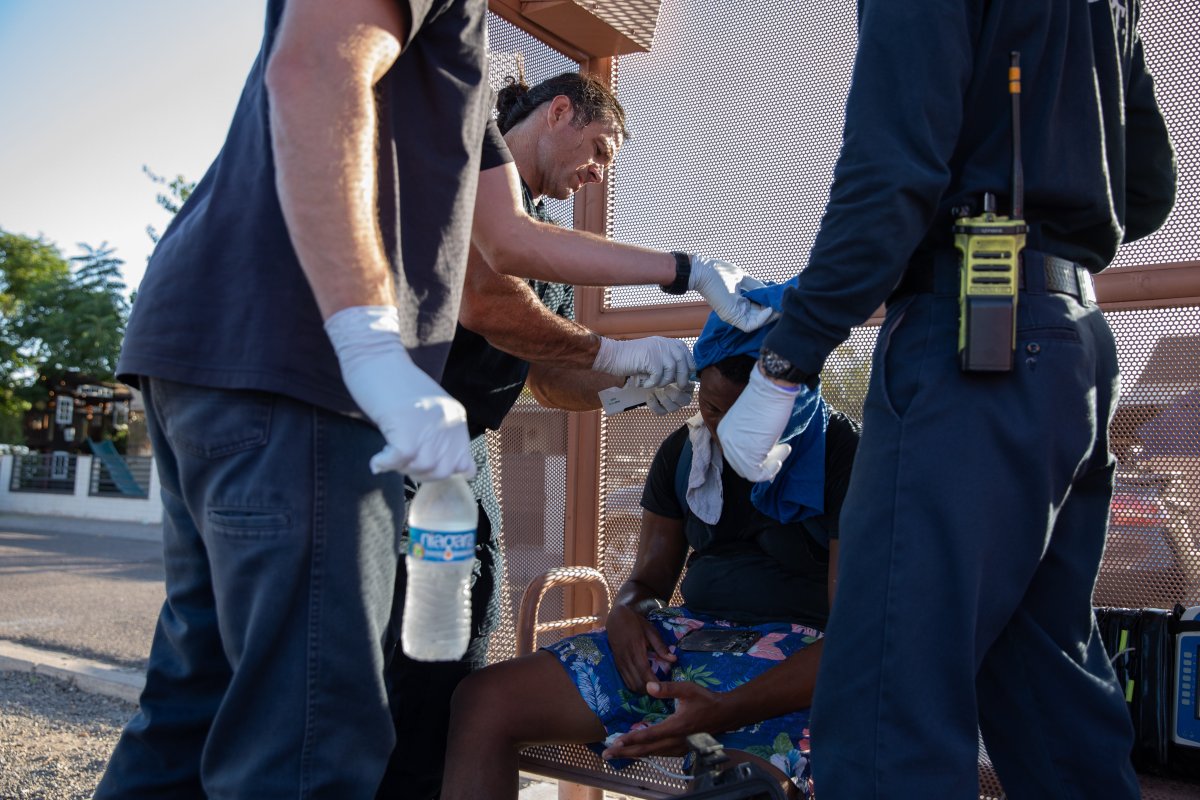In Arizona, an ongoing heatwave has made the ground so hot that it’s leaving many unlucky locals with severe burns.

Throughout most of July, much of Arizona has seen record-breaking high temperatures. In Phoenix, temperatures have reached over 110 F (43 C) for 25 consecutive days, a national record among all U.S. cities.
The sweltering heat is not just uncomfortable. According to officials at the Arizona Burn Center, medics have seen a sharp uptick in the amount of people who have suffered contact burns from falling on concrete and asphalt surfaces.
Dr. Kevin Foster, director of burn services at the Arizona Burn Center, told CNN that all 45 of the centre’s beds are currently filled. One-third of those patients were reportedly burned, sometimes to a life-threatening degree, from falling on the ground.
Foster also claimed there are numerous burn victims in the ICU — though did not disclose how many — and said half were burned as a result of falling.
“Summers are our busy season, so we anticipate that this sort of thing is going to happen. But this is really unusual — the number of patients that we’re seeing and the severity of injuries — the acuity of injuries is much higher,” Foster told the outlet.
In parts of Arizona, asphalt and concrete surfaces have become so hot that even a few seconds of direct contact with skin can leave a painful, serious burn.
Both asphalt and concrete are dense materials that absorb and hold heat, which can make the ground far hotter than the air. One 2019 study from the University of Nevada, Las Vegas found on a day when temperatures reach 111 F (nearly 44 C), pavement in direct sunlight can climb to a brutal 147 F (63 C). (The study notes, for reference, that a fried egg becomes firm at 158 F or 70 C.)
Foster said most of the victims burned during a fall are elderly people and children who are unable to quickly stand up again.
In a separate interview with the BBC, Foster said the “biggest problem” is dehydrated drug users fainting on the sidewalk.
Some of the patients treated for a fall by Foster and his colleagues at the Arizona Burn Center have required skin grafts and reconstructive surgery for third-degree burns.
Other patients have also been burned after touching hot surfaces like the metal on car seatbelts, the BBC reported.
Animals too can be burned from stepping on hot pavements, so it is best to walk pets in the early morning or evening when temperatures are lower.
Arizona is not the only U.S. state to see victims suffer contact burns from concrete or asphalt. NBC News spoke to a 73-year-old Air Force veteran who suffered a third-degree burn while waiting at a bus stop in Las Vegas, Nev. When Christopher Malcolm began to feel overheated on a 110 F (43 C) day, he sat down on the pavement to rest for 40 minutes. Malcolm’s skin was burned even through his jeans, but he did not realize the severity until afterward.
The National Weather Service Phoenix, Arizona, said very hot temperatures are expected to remain in the area this week, though a weekend thunderstorm may help to quell the sweltering heat.
This month, between July 3 and July 9, Earth experienced the hottest week on record as global temperatures reached a mean of 17.18 C.
The record temperatures are partly due to the onset of El Niño, according to the WMO, which is expected to fuel further heat on land and in the oceans and lead to more extreme heat waves.
Canada is no exception to the above-normal temperatures seen recently, according to Global News chief meteorologist Anthony Farnell. He noted records have recently been broken in the Northwest Territories, with temperatures reaching 37.9 C — the farthest north such a temperature has ever been recorded.
On July 9, heat warnings were in place in six provinces and two territories, with temperatures around 30 C in most of Atlantic Canada, B.C. and Alberta for the day and/or Monday, depending on location. The high temperatures have been one factor that has led to more wildfires this year, which in turn has created smoky and hazy conditions in major cities across North America.
— With files from Global News’ Eric Stober







Comments